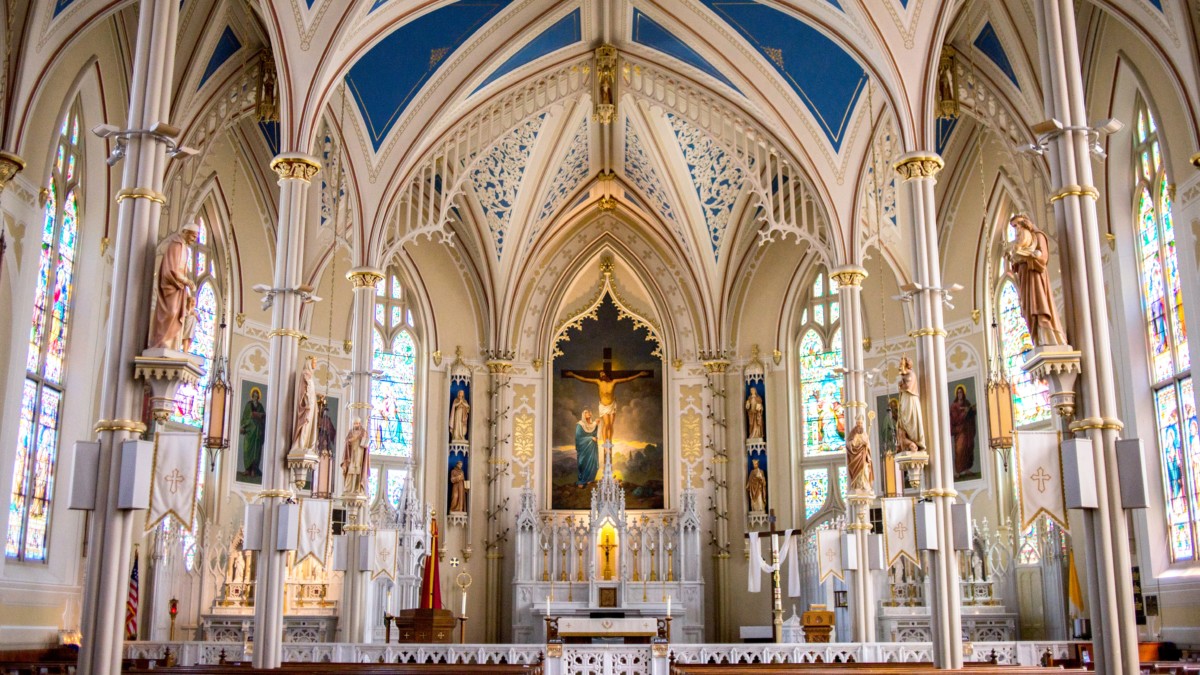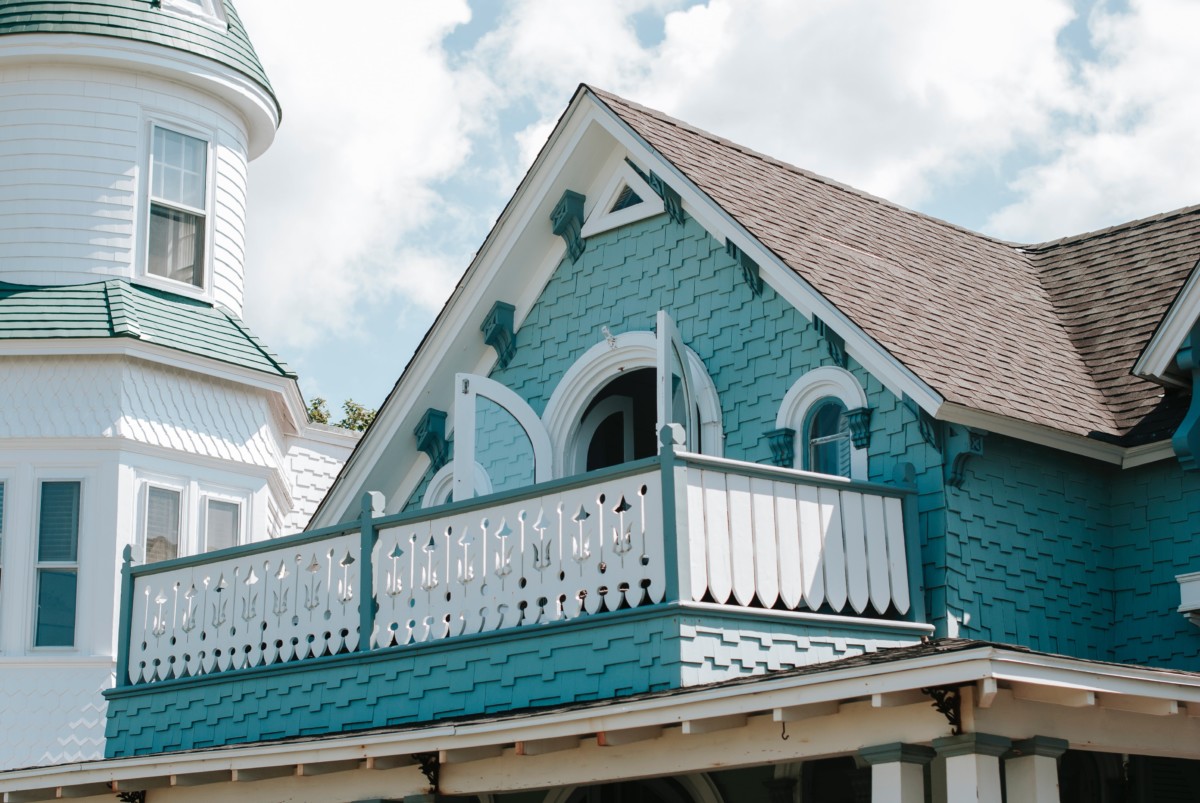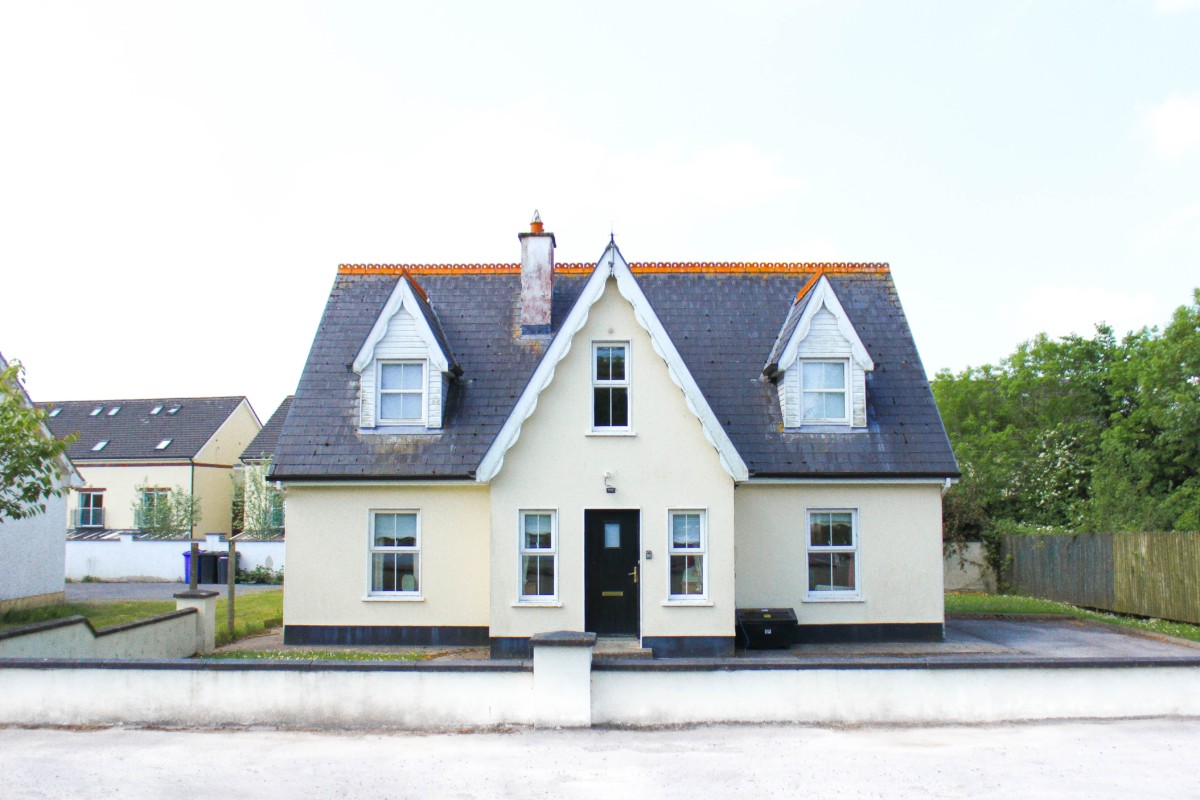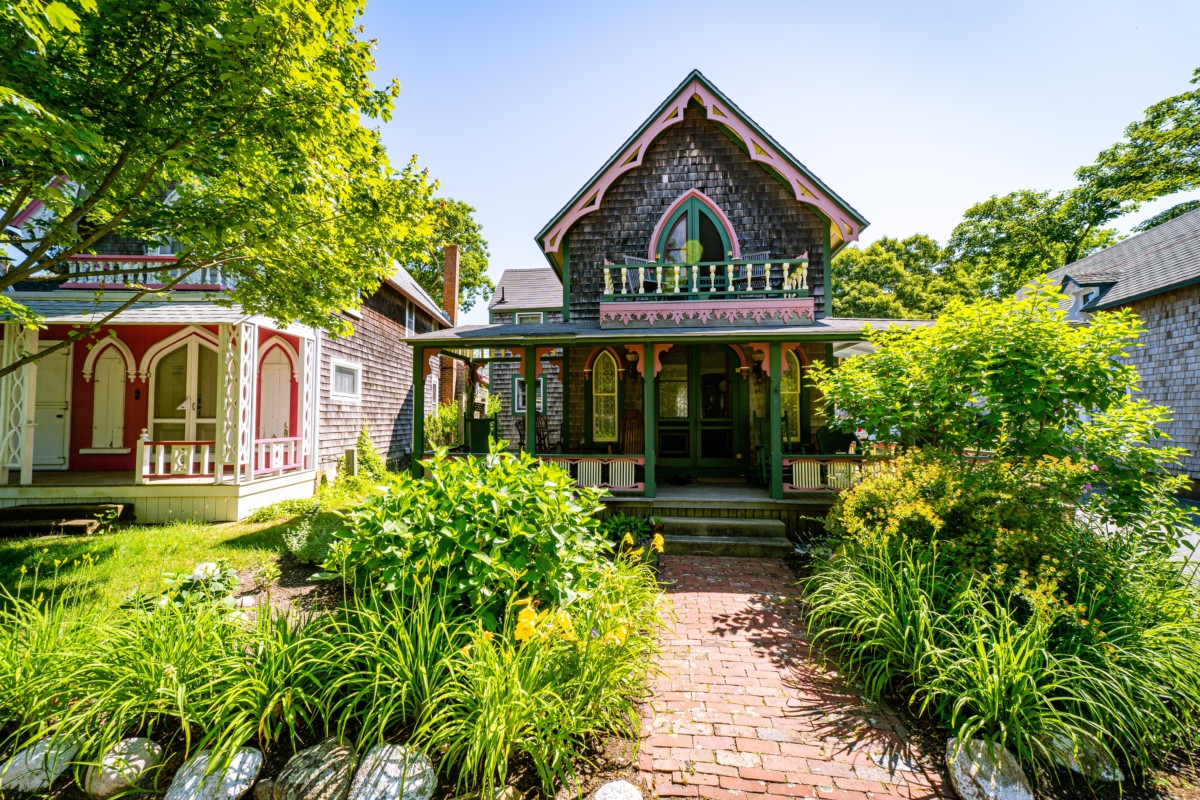When the word “gothic” comes to mind, you probably find yourself imagining a spooky home with dark-colored interior décor, and maybe a few gargoyles on the roof. But, it’s not all black furniture and Halloween-esque details year-round. Gothic architecture is full of history, with steeply pitched roofs, ornate details, pointed arch windows, and much more that has helped it last throughout the centuries.
So let’s take a look at what makes a home Gothic and you just might find the right home style you’ve been searching for all along.

What is a Gothic style house?
With their pitched roofs and pointed arches, Gothic homes are reminiscent of Gothic European cathedrals built during the Middle Ages. Gothic style homes are similar with their stone exteriors, pitched roofs, pointed arch windows, and prominent chimneys. They’re often two-story homes found throughout many European countries, but can also be found in the US.
History of Gothic architecture
Throughout the Middles Ages, Gothic architecture was the prominent architectural style used in European cathedrals, like France’s Notre Dame and England’s Westminster Abbey. These traditional Gothic buildings often feature flying buttresses, large towers, countless windows, and incredible ornate detail.
While Gothic architecture took a backseat after the 16th century, the Gothic Revival style began to gain popularity in England during the 18th and 19th centuries. During this same period, the style eventually made its way to the US.
As a result of continuing industrialization and modern factories populating cities, many people began to look toward the architecture of the past. This coincided with the romantic movement, which embraced nature and a fondness for the past. Thus Gothic Revival style houses and their romantic details gained in popularity.
However, as the 19th century came to a close and building methods focused on functionality over details, the style faded. But there are still plenty of Gothic Revival homes you can find in the housing market – you may just have to work a little harder to find one of these dreamy houses.
Gothic architecture vs Gothic Revival architecture
When you’re looking at Gothic-style homes you’ll likely run across the terms “Gothic” and “Gothic Revival.” While often used interchangeably, these two styles are slightly different and represent different time periods. Here’s what makes Gothic different from Gothic Revival.
Gothic architecture (1100s – 1500s)
- Built before or during the 16th century
- Constructed with older building techniques
- Primarily had glass and stone details
Gothic Revival (1740s – 1890s)
- Built during the 18th and 19th centuries
- Constructed with more modern building techniques
- Used glass, iron, stone, and steel details

Common Gothic Revival details
Gothic Revival architecture has a variety of unique elements that shape and create the style. Here are some of the main features that can help you determine if a house is designed in the Gothic Revival style.
Exterior features
Many Gothic homes have stone or brick exteriors, although some, called Carpenter Gothic homes, have wood-paneled facades. Almost all Gothic Revival style homes have steeply pitched roofs and some with gables. The exteriors also have detailed trims and millwork, sometimes called scrollwork. You’ll likely find a porch with a large window above it, stained glass or bay windows, chimneys, and maybe even a small tower.
Interior features
There are lots of ways to create a Gothic interior design even if you don’t have a Gothic Revival home. There are some common features you’ll find in a Gothic Revival house, such as arches throughout the home, whether that’s the window casings or in hallways. Many homes also have crown molding, vaulted ceilings, and intricate woodwork.

Styles of Gothic homes
There are a lot of variations and twists on the Gothic Revival style. However, some home styles are more commonly found in the Gothic Revival style than others. Here are a few popular twists on Gothic homes.
Carpenter Gothic style
The Carpenter Gothic style is a simplified version of the architectural movement that still embraces some of the most prominent Gothic details. This style may also be called “Rural Gothic” or “American Gothic.” These homes aren’t made with stone, instead have vertical board and batten siding. The roof overhangs still feature detailed scrollwork, like that of a gingerbread house. You’ll still find steeply pitched roofs and cathedral-style windows with pointed arches on Carpenter Gothic homes.
Another variation of the style is a Carpenter Gothic cottage, which is heavily detailed and smaller in square footage. They were often built in populated areas but made a big impact compared to other cottage-style residences.
Brick Gothic style
The brick Gothic home is probably the most recognizable version of a Gothic home. It’s easily identifiable by its red brick exterior and white millwork. You’ll find lots of the same Gothic Revival details like pitched roofs, curved or arched windows, and possibly oriel windows.
Vernacular Gothic Revival
Vernacular Gothic Revival homes were popularized by landscape designer Andrew Jackson Downing and architect Andrew Jackson Davis. This variation was common in rural residences, but isn’t technically a “style.” Vernacular Gothic homes were more of a regional twist on the Gothic Revival movement rather than a specific style.

Victorian Gothic style
This style gets a little confusing. Victorian houses and Gothic Revival houses are different home styles. However, they can merge into one style – the Gothic Revival Victorian home. So, this style is technically a Victorian home with romantic Gothic Revival details. You’ll find pitched roofs, detailed trim, and pointed arch windows. You can find many of these homes in Martha’s Vineyard, MA.
Plantation Gothic style
Gothic Revival style homes were very common in rural areas so they could stand out against the natural landscape. These houses were often very large and reminiscent of churches and cathedrals. Depending on the budget, a planation Gothic Revival house could be very elaborate with brightly colored exteriors and trim. Or they could be more subdued in earthy colors.
How to find Gothic Revival style homes in your area
You may find that the detailed elements – tall ceilings, arched windows, and intricate trims – of a Gothic Revival house are a perfect fit for what you’re looking for in a home. You can find Gothic Revival style houses across the country, whether you’re looking at country houses around Boston, MA, or a city-center home in San Francisco, CA. However, due to the rarity of this architectural style, you may spend a lot of time searching to find a home with the Gothic details you’re looking for.
If a Gothic Revival house suits your style, Redfin can help you find one in your area. Most, if not all, realtors and others around the country will be familiar with Gothic architecture and will likely be able to show you a few homes as they become available in the local housing market.
The post What is a Gothic Style House? It’s Not all Dark Colors and Gargoyles appeared first on Redfin | Real Estate Tips for Home Buying, Selling & More.
